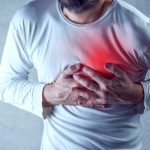Reduce the risk of blood clots – naturally
 (NaturalHealth365) Many people fear the threat of death from a heart attack, stroke, or cancer as they grow older. But few probably realize that all three deadly conditions can almost always be traced to the same significant event.
(NaturalHealth365) Many people fear the threat of death from a heart attack, stroke, or cancer as they grow older. But few probably realize that all three deadly conditions can almost always be traced to the same significant event.
In truth, the most common form of heart attack, the leading cause of stroke, and the number one reason for death in cancer patients all come down to the same condition: the formation of blood clots. For instance, a recent meta-analysis published in BMC Cardiovascular Disorders reveals that heart attacks, or myocardial infarctions (MIs), are a significant global health issue. The study analyzed data from over 8 million people worldwide. They found that 3.8% of individuals under 60 and 9.5% of those over 60 have experienced an MI.
Beyond the scope of this article, but important to note, we still want to mention that many blood clots are happening now (more than ever) due to these “new” shots based on mRNA technology. Click here for more information about the dangers of mRNA-based injections.
Why conventional methods to prevent blood clots fail
Not all blood clots are bad, of course. The clotting of blood is important during the normal healing process. But abnormal clotting of blood – known medically as thrombosis – can be deadly.
Based on the medical literature, we know that you can reduce the threat of thrombosis by consuming a healthy diet – loaded with antioxidants – and consuming high-quality, superfood supplements on a daily basis. The problem here is an out-of-date, chemical mindset of conventionally-trained physicians. They have a fantastic opportunity to teach patients about the value of good nutrition on health. But they don’t!
Conditions that can increase your risk include atherosclerosis, mechanical heart valves, atrial fibrillation, venostasis, blood clotting disorders, and cancer. Other known risk factors include elevated total cholesterol, LDL, triglycerides, or low HDL. Another risk factor is elevated high-sensitivity C-reactive protein or hsCRP.
Just to be clear, hsCRP indicates inflammation and the likelihood of blood vessel injury. It is considered a major predictive risk factor for stroke or heart attack. In addition, hypertension and elevated glucose are also known risk factors.
Of course, we shouldn’t ignore other risk factors such as cancer, elevated plasma fibrinogen, thyroid disorders, a sedentary lifestyle, surgeries to the lower extremities, elevated homocysteine, and excessive abdominal body fat.
Can Western medicine really help us to avoid blood clots and heal the body?
In dealing with blood clots, Western medicine often prescribes two classes of drugs to reduce the risk of thrombosis and its complications. These include antiplatelet drugs and anticoagulants. A third class called thrombolytics or fibrinolytics breaks up blood clots and limits tissue damage once they have occurred.
But wait, here’s the problem …
These drugs are unable to effectively address the wide range of mechanisms that can occur to cause a thrombotic event. In fact, many patients still get victimized by a heart attack, stroke, or other fatal incident caused by an abnormal blood clot – simply because the medication they are on is unable to address the various true causes of thrombosis.
Remember, many of these drugs cause unwanted side effects. For example, warfarin – a drug first developed as a pesticide for rats and mice – is commonly used to prevent blood clots in patients at risk. Marketed under the trade name Coumadin, this drug greatly increases the risk of serious bleeding as well as increasing the risk of death from traumatic injuries.
Warfarin is also known to increase the risk of atherosclerosis and osteoporosis – when used long-term.
Choosing natural alternatives for blood clot prevention
The good news is that you can choose from several natural alternatives to reduce your risk of abnormal blood clots, even if you are at greater risk due to other medical conditions. These natural blood thinners work much in the same way as their pharmaceutical counterparts. However, because they can be used safely in combinations, they are able to have a multi-faceted effect on reducing abnormal blood clots.
Some of the most common natural approaches to thrombosis prevention include:
Olive: Both olive leaf extract and olive oil preparations have been shown in laboratory tests to decrease activity associated with abnormal blood clots.
Pomegranate: Pomegranate contains several bioactive antioxidant polyphenols known to lower blood pressure in hypertensive patients. Pomegranate juice has also been shown to reduce platelet aggregation.
Garlic: Garlic is fairly well known for its ability to boost cardiovascular health. Garlic extracts have also been shown to inhibit platelet aggregation.
Tea: Tea consumption has been shown to provide protective effects for cardiovascular health, reducing the onset of heart disease and stroke. Green tea showed promising results, primarily in longer-term consumption.
Quercetin: Quercetin glucosides, the natural form of quercetin, were found to inhibit collagen-induced platelet formation. In addition, quercetin from food sources, such as onion, was shown to have positive effects on platelet aggregation.
Tomatoes: These include several nutrients that can protect the cardiovascular system. They have also been shown to promote antiplatelet activity.
Additional natural ingredients that have been shown to reduce the risk of abnormal blood clots include resveratrol, grape seed extract, fish oil, capsaicinoids, ginger, and curcumin.
The bottom line is that nature offers powerful ways to protect our health – let’s make the most of them and take control of our well-being with these natural approaches. After all, prevention is always better than cure, and incorporating these foods in organic varieties into our daily lives can be a simple yet effective step towards a healthier future.
Editor’s note: Discover the best ways to naturally avoid the threat of heart disease, own the Cardiovascular Docu-Class created by NaturalHealth365 Programs.
Sources for this article include:



